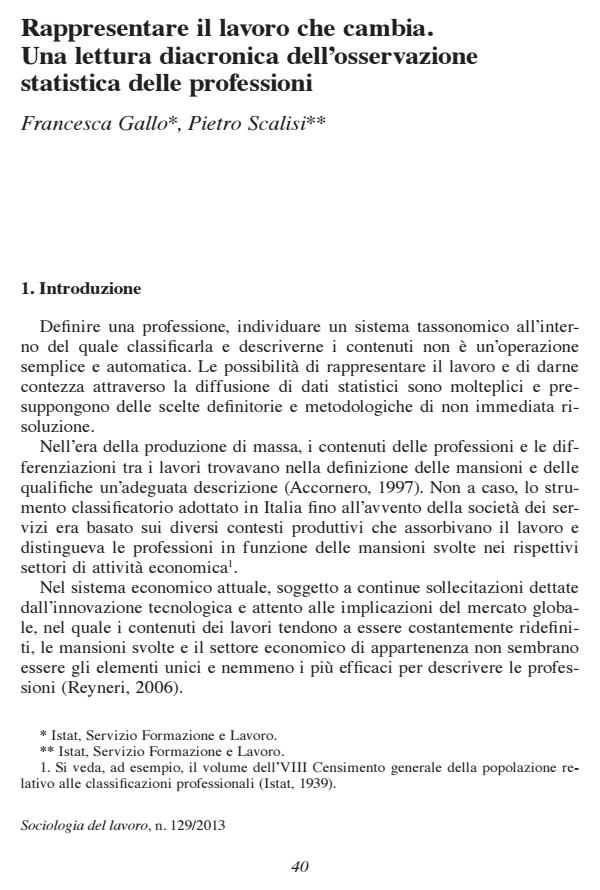The representations of transformations of work. A diachronic reading on the statistical analysis of professions
Journal title SOCIOLOGIA DEL LAVORO
Author/s Francesca Gallo, Pietro Scalisi
Publishing Year 2013 Issue 2013/129
Language Italian Pages 23 P. 40-62 File size 641 KB
DOI 10.3280/SL2013-129004
DOI is like a bar code for intellectual property: to have more infomation
click here
Below, you can see the article first page
If you want to buy this article in PDF format, you can do it, following the instructions to buy download credits

FrancoAngeli is member of Publishers International Linking Association, Inc (PILA), a not-for-profit association which run the CrossRef service enabling links to and from online scholarly content.
The paper reviews the issues which have underpinned the different representations of work in the official statistics on occupations. The aim is to help users to grasp the meaning given to occupation over time. Going through the rationale of the international debate on taxonomies, the authors underline the need to broaden the prospects of job analysis, overcoming and supplementing the answers given through the basic language of the official classification of occupations. Enriching the set of ‘words’ available to describe the work and identifying new r esearch t ools t o a nalyse t he a ctual c ontents a nd r equirements o f occupations is the key to bring out what is needed to boost employment and economic growth.
Keywords: Job classification, job analysis, model O*NetTD, survey of professions, competence
Francesca Gallo, Pietro Scalisi, Rappresentare il lavoro che cambia. Una lettura diacronica dell’osservazione statistica delle professioni in "SOCIOLOGIA DEL LAVORO " 129/2013, pp 40-62, DOI: 10.3280/SL2013-129004